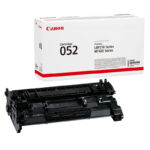Cognitive automation Electronic Markets
A not-for-profit organization, IEEE is the world’s largest technical professional organization dedicated to advancing technology for the benefit of humanity.© Copyright 2024 IEEE – All rights reserved. RPA is taught to perform a specific task following rudimentary rules that are blindly executed for as long as the surrounding system remains unchanged. An example would be robotizing the daily task of a purchasing agent who obtains pricing information from a supplier’s website.
Cognitive automation requires more in-depth training and may need updating as the characteristics of the data set evolve. But at the end of the day, both are considered complementary rather than competitive approaches to addressing different aspects of automation. As companies continue to increase their use of RPA, lack of leadership and IT expertise threaten to undermine the benefits of RPA and magnify its drawbacks, according to IT research firm Everest Group (see chart „5 RPA pain points C-level leadership needs to address“). RPA can be used for procurement, automating order processing and payments, monitoring inventory levels and tracking shipments.
It can range from simple on-off control to multi-variable high-level algorithms in terms of control complexity. Ethical and moral rules have been used to that end as they can potentially affect both the acceptance of robotic applications and robotic decision making [29, 33]. Norm violation may decrease human trust in an agent, therefore the agent should alter or completely discard a plan if it goes against moral values [6, 12]. Nevertheless, moral reasoning and evaluation is not yet incorporated in cognitive architectures, neither is it an integral part of a holistic decision process.
Although the exact figures may never be known, US military forces and the Central Intelligence Agency have killed scores of civilians in drone attacks. Official reports acknowledge the deaths of hundreds1, whereas independent estimates reach the low thousands, including hundreds of children2,3. Although some of these deaths may have been anticipated but deemed morally defensible by those responsible, most were presumably unintended and, at least in part, attributable to human cognitive biases4. Here, we seek to identify determinants of trust in the latter category of unreliable AI recommendations regarding life-or-death decisions. Although our methodological focus centers on deciding whether to kill, the questions motivating this work generally concern overreliance on AI in momentous choices produced under uncertainty.
Cognitive automation maintains regulatory compliance by analyzing and interpreting complex regulations and policies, then implementing those into the digital workforce’s tasks. It also helps organizations identify potential risks, monitor compliance adherence and flag potential fraud, errors or missing information. AI and ML are fast-growing advanced technologies that, when augmented with automation, can take RPA to the next level. Traditional RPA without IA’s other technologies tends to be limited to automating simple, repetitive processes involving structured data. Cognitive automation has the potential to completely reorient the work environment by elevating efficiency and empowering organizations and their people to make data-driven decisions quickly and accurately. Finally, participants completed demographics questions, including items probing their attitudes toward drone warfare, ratings of how difficult the threat-identification visual challenge seemed and how seriously they took the task.
For example, an enterprise might buy an invoice-reading service for a specific industry, which would enhance the ability to consume invoices and then feed this data into common business processes in that industry. Conversely, cognitive automation learns the intent of a situation using available senses to execute a task, similar to the way humans learn. It then uses these senses to make predictions and intelligent choices, thus allowing for a more resilient, adaptable system. Newer technologies live side-by-side with the end users or intelligent agents observing data streams — seeking opportunities for automation and surfacing those to domain experts. There are a number of advantages to cognitive automation over other types of AI. Among them are the facts that cognitive automation solutions are pre-trained to automate specific business processes and hence need fewer data before they can make an impact; they don’t require help from data scientists and/or IT to build elaborate models.
Advanced Cognitive Robot Debuts at Automate 2024 – IoT World Today
Advanced Cognitive Robot Debuts at Automate 2024.
Posted: Mon, 06 May 2024 13:20:38 GMT [source]
Craig Muraskin, Director, Deloitte LLP, is the managing director of the Deloitte U.S. Innovation group. Craig works with Firm Leadership to set the group’s overall innovation strategy. He counsels Deloitte’s businesses on innovation efforts and is focused on scaling efforts to implement service delivery transformation in Deloitte’s core services through the use of intelligent/workflow automation technologies and techniques. Craig has an extensive track record of assessing complex situations, developing actionable strategies and plans, and leading initiatives that transform organizations and increase shareholder value.
Anyone who has been following the Robotic Process Automation (RPA) revolution that is transforming enterprises worldwide has also been hearing about how artificial intelligence (AI) can augment traditional RPA tools to do more than just RPA alone can achieve. Robotic process automation streamlines workflows, which makes organizations more profitable, flexible, and responsive. It also increases employee satisfaction, engagement, and productivity by removing mundane tasks from their workdays. Automation software to end repetitive tasks and make digital transformation a reality.
Highway systems
You can foun additiona information about ai customer service and artificial intelligence and NLP. This is less of an issue when cognitive automation services are only used for straightforward tasks like using OCR and machine vision to automatically interpret an invoice’s text and structure. More sophisticated cognitive automation that automates decision processes requires more planning, customization and ongoing iteration to see the best results. Cognitive automation typically refers to capabilities offered as part of a commercial software package or service customized for a particular use case.
Our approach places business outcomes and successful workforce integration of these RCA technologies at the heart of what we do, driven heavily by our deep industry and functional knowledge. Our thought leadership and strong relationships with both established and emerging tool vendors enables us and our clients to stay at the leading edge of this new frontier. 2 indicate that humanlike social interactivity, largely independent of physical anthropomorphism, can modestly heighten trust in AI agents within task domains involving perceptual categorizations under uncertainty.
If this hypothesis is true, then the cognitive load induced by our threat-identification task may have heightened the tendency to attribute humanlike mental qualities to both the Humanoid and Nonhumanoids—all of whom were overtrusted in our simple model of life-or-death decision-making. Although our present task was sufficiently difficult as to require significant cognitive resources, and our task framing (i.e., a simulation in which mistakes would mean killing children) Chat GPT appears to have inspired participants to take the task seriously, it could not be described as particularly stressful. Future work exploring the extent to which demanding and threatening circumstances up-regulate anthropomorphism and related decision biases should incorporate methods that maximize realism and emotional engagement (e.g., VR)42. To the contrary, our findings portray the people in our samples as dramatically disposed to overtrust and defer to unreliable AI.
Where significant contrasts between conditions were detected, the differences were modest. All three robots were appraised to be relatively high in Intelligence, Safety and Likability, while moderately Anthropomorphic or Animate (Supplementary Table S2). This overall pattern is consistent with the view that people are disposed to attribute a considerable degree of intelligence and affiliative qualities even to minimally anthropomorphic agents38. Boxplots of changes in confidence between the initial threat-identification decisions and the final decisions following robot feedback (difference scores), by decision context, in Expt. The width of the shaded areas represents the proportion of data located there; means are represented by the thick, black horizontal bars; medians are indicated by the thin, grey bars; error bars indicate 95% CIs.
Language-based cognitive capability has been shown to promote interaction, communication and understanding of abstract concepts [16]. Robots able to express thoughts and actions allow a better cooperation with humans [44]. An agent with the ability to summarize its actions and gain new knowledge has been demonstrated [14].
In contrast, RPA systems typically develop the action list simply by recording the users’ actions as they perform a task in an application’s graphical user interface (GUI). Once recorded, the system repeats those tasks directly in the GUI without human effort required. According to IDC, in 2017, the largest area of AI spending was cognitive applications. This includes applications that automate processes that automatically learn, discover, and make recommendations or predictions.
To capitalize on RPA, strong C-level leadership is required to ensure that business outcomes are achieved, new governance policies are met, and the people whose jobs have changed due to RPA are trained to take on new responsibilities (see section „What are the risks of RPA? Why do RPA projects fail?“). Below is a brief description of the three leading enterprise RPA vendors — Automation Anywhere, Blue Prism and UiPath — along with a select group of up-and-coming and niche players. For more information on RPA vendors, including pricing and licensing information, click on „Consider these 12 RPA software vendors for deployment.“ Utilities (electricity oil, gas, etc.) use RPA for accounts and billing, meter-reading exceptions, customer service queries and debt recovery. Read about Schneider Electric’s ambitious, multivendor rollout of RPA in its customer care, finance, HR and supply chain divisions. Hard data on the benefits and drawbacks of RPA by industry not only varies from study to study but also is often contradictory.
The human brain is wired to notice patterns even where there are none, but cognitive automation takes this a step further, implementing accuracy and predictive modeling in its AI algorithm. Another major shift in automation is the increased demand for flexibility and convertibility in manufacturing processes. Manufacturers are increasingly demanding the ability to easily switch from manufacturing Product A to manufacturing Product B without having to completely rebuild the production lines. Flexibility and distributed processes have led to the introduction of Automated Guided Vehicles with Natural Features Navigation. These systems require proper setup of the right data sets, training and consistent monitoring of the performance over time to adjust as needed. These technologies are coming together to understand how people, processes and content interact together and in order to completely reengineer how they work together.
Cognitive automation can uncover patterns, trends and insights from large datasets that may not be readily apparent to humans. Following the final trial, the robot thanked the participant and directed them to complete a series of surveys related to their experience during the simulation (random order, see Supplement). The research assistant then escorted the participant to a workstation positioned out of sight of the robot to preclude participants from attempting to interact with the robot while completing the survey measures. Participants in Experiment 1 interacted with either an animated humanoid projected onto a screen (left) or a life-sized humanoid (right) of equivalent stature (RoboThespian)53. They can be designed for multiple arrangements of digital and analog inputs and outputs (I/O), extended temperature ranges, immunity to electrical noise, and resistance to vibration and impact.
Currently, it can still require a large amount of human capital, particularly in the third world where labor costs are low so there is less incentive for increasing efficiency through automation. Self-acting machine tools that displaced hand dexterity so they could be operated by boys and unskilled laborers were developed by James Nasmyth in the 1840s.[44] Machine tools were automated with Numerical control (NC) using punched paper tape in the 1950s. The logic performed by telephone switching relays was the inspiration for the digital computer.
A path to the cognitive enterprise
One of the most exciting ways to put these applications and technologies to work is in omnichannel communications. Today’s customers interact with your organization across a range of touch points and channels – chat, interactive IVR, apps, messaging, and more. When you integrate RPA with these channels, you can enable customers to do more without needing the help of a live human representative. Unlike traditional unattended RPA, cognitive RPA is adept at handling exceptions without human intervention. For example, most RPA solutions cannot cater for issues such as a date presented in the wrong format, missing information in a form, or slow response times on the network or Internet. In the case of such an exception, unattended RPA would usually hand the process to a human operator.

CIOs need to create teams that have expertise with data, analytics and modeling. Then, as the organization gets more comfortable with this type of technology, it can extend to customer-facing scenarios. Robotic Process Automation (RPA) tools can help businesses improve the efficiency and effectiveness of their operations faster and at a lower cost than other automation approaches. Interest and activity in RPA is growing and we are increasingly seeing deployments reaching enterprise scale and operating on processes across the organization. Modeling human cognition has led to the formal definition of cognitive architectures.
With the use of R&CA technologies, data can be assembled with substantially less effort and reduced risk of error. This would allow professionals to better analyze data outputs at an enhanced speed, and make more informed decisions, all at a relatively low cost. RPA is a simple technology that completes repetitive actions from structured digital data inputs. Cognitive automation is the structuring of unstructured data, such as reading an email, an invoice or some other unstructured data source, which then enables RPA to complete the transactional aspect of these processes.
The scope of automation is constantly evolving—and with it, the structures of organizations.
In addition, we also explored whether having initially been correct reduced the likelihood of reversing threat-identifications when the robot disagreed, and whether participants were more or less disposed to reverse their decisions after identifying enemies versus allies. It was from the automotive industry in the United States that the PLC was born. Before the PLC, control, sequencing, and safety interlock logic for manufacturing automobiles was mainly composed of relays, cam timers, drum sequencers, and dedicated closed-loop controllers. Since these could number in the hundreds or even thousands, the process for updating such facilities for the yearly model change-over was very time-consuming and expensive, as electricians needed to individually rewire the relays to change their operational characteristics. „Ultimately, cognitive automation will morph into more automated decisioning as the technology is proven and tested,“ Knisley said. Another benefit of cognitive automation lies in handling unstructured data more efficiently compared to traditional RPA, which works best with structured data sources.
RPA software and BPMS (business process management software) are not mutually exclusive, but can work in tandem. This expert tip digs into how BPMS and RPA can be used together to drive digital transformation. You might even have noticed that some RPA software vendors — Automation Anywhere is one of them — are attempting to be more precise with their language.
In 1959 Texaco’s Port Arthur Refinery became the first chemical plant to use digital control.[37]
Conversion of factories to digital control began to spread rapidly in the 1970s as the price of computer hardware fell. It’s also important to plan for the new types of failure modes of cognitive analytics applications. Frictionless, automated, personalized travel on demand—that’s the dream of the future of mobility.
When the robot disagreed with their initial threat-identifications, participants reversed their decisions about whether to kill (i.e., [not] deploying the missile despite initially categorizing the target as containing [enemies] civilians) in 61.9% of cases. Participants’ initial threat-identifications were accurate in 72.1% of trials, confirming that, although difficult, the task could be performed at well above chance. Threat-identification accuracy fell to 53.8% when the robot disagreed, a decline of 18.3%. Against Prediction 2, we observed no interactions between the robot feedback and embodiment conditions on either threat-identifications or decisions to kill (Table 1). When their initial threat-identifications were incorrect, participants in both experiments were less confident and more inclined to reverse their choices at the robot’s behest. Despite this protective effect of initial accuracy, the magnitude of the observed overtrust in random AI feedback, which caused a ~ 20% degradation in accuracy in both experiments, carries disquieting implications regarding the integration of machine agents into military or police decision-making.
CIOs will derive the most transformation value by maintaining appropriate governance control with a faster pace of automation. The Fourth Industrial Revolution is driven by the convergence of computing, data and AI. It is totally transforming the nature of business operations and the role of operations leaders, across industries. Those ready to take advantage of these changes will lead the revolution, not be driven by it. A more detailed representation of human cognition is attempted by LIDA (Learning Intelligent Distribution Agent) cognitive architecture [18, 19].
Anthony Macciola, chief innovation officer at Abbyy, said two of the biggest benefits of cognitive automation initiatives have been creating exceptional CX and driving operational excellence. In CX, cognitive automation is enabling the development of conversation-driven experiences. He expects cognitive automation to be a requirement for virtual assistants to be proactive and effective in interactions where conversation and content intersect. Artificial cognitive architectures try to imitate human cognition – the epitome of cognitive systems.
RPA is best for straight through processing activities that follow a more deterministic logic. In contrast, cognitive automation excels at automating more complex and less rules-based tasks. RPA excels at automating rules-based tasks robotic cognitive automation that strictly follow if-then-else logic, whereas cognitive automation is better suited at mining for insights that augment qualitative human judgment, said Chris Huff, chief strategy officer at Kofax, an automation tools provider.
For example, Bainbridge and colleagues reported that when robots suggested unexpected and seemingly inadvisable actions such as throwing books into the trash, participants were more likely to comply when the robot was physically present than when the suggestion was made by a screen-mediated instantiation29. Physical embodiment has been found to heighten human perceptions of social interactions with robots as engaging and pleasurable29,30, although disembodied agents have also been found engaging31,32, particularly when incorporating anthropomorphic characteristics such as facial expressions or gestures33. Motivated by these prior findings, we manipulated whether a highly anthropomorphic robot was physically embodied versus virtually projected. Participants also rated their degree of confidence in both their initial and post-feedback threat-identifications. Following this drone warfare task, we collected individual differences in appraisals of the agent’s intelligence, among other qualities (i.e., anthropomorphism, animacy, likability and safety), using the Godspeed Questionnaire Series (GQS)24.
RPA enables CIOs and other decision makers to accelerate their digital transformation efforts and generate a higher return on investment (ROI) from their staff. Cognitive process automation can automate complex cognitive tasks, enabling faster and more accurate data and information processing. This results in improved efficiency and productivity by reducing the time and effort required for tasks that traditionally rely on human cognitive abilities. RPA imitates manual effort through keystrokes, such as data entry, based on the rules it’s assigned. But combined with cognitive automation, RPA has the potential to automate entire end-to-end processes and aid in decision-making from both structured and unstructured data. The overall pattern of comparability between appraisals of the Interactive Humanoid and Interactive Nonhumanoid indicates that their sociolinguistic responsivity to participants’ choices largely trumped the physical differences between them.
- Simply automating the work flows of employees who are not doing the task correctly, or each doing it in a different way, is bad practice, explained Bob De Caux, vice president of AI and RPA at enterprise software provider IFS, in his primer on the benefits and downsides of RPA.
- Achieve faster ROI with full-featured AI-driven robotic process automation (RPA).
- Beyond automating existing processes, companies are using bots to implement new processes that would otherwise be impractical.
- In this case, an interlock could be added to ensure that the oil pump is running before the motor starts.
- This allows the automation platform to behave similarly to a human worker, performing routine tasks, such as logging in and copying and pasting from one system to another.
„A human traditionally had to make the decision or execute the request, but now the software is mimicking the human decision-making activity,“ Knisley said. Although it is very effective at this and its applicability across all functional domains drives significant value, it is seldom able to drive a truly transformational change in the underlying value chains due to its task focus and inability to deal with complex decision-making. In select learning programs, you can apply for financial aid or a scholarship if you can’t afford the enrollment fee. If fin aid or scholarship is available for your learning program selection, you’ll find a link to apply on the description page. To achieve this, two streams of research need to merge, one concerned with physical systems specifically designed to interact with unconstrained environments and another focussing on control architectures that explicitly take into account the need to acquire and use experience.
While back-end connections to databases and enterprise web services also assist in automation, RPA’s real value is in its quick and simple front-end integrations. IA is capable of advanced data analytics techniques to process and interpret large volumes of data quickly and accurately. This enables organizations to gain valuable insights into their processes so they can make data-driven decisions. And using its AI capabilities, a digital worker can even identify patterns or trends that might have gone previously unnoticed by their human counterparts.
The merging of these two areas has brought about the field of Cognitive Robotics. This is a multi-disciplinary science that draws on research in adaptive robotics as well as cognitive science and artificial intelligence, and often exploits models based on biological cognition. RPA 2.0 refers to the fact that RPA platforms continue to evolve, pairing up with technologies such as process mining to identify the right automation candidates for RPA and incorporating machine learning, which enables platforms to automate longer and more complex tasks, including whole job roles. RPA aims to improve efficiency, boost productivity and save money by assisting with — or entirely replacing — the routine and error-prone digital processing tasks still done with human labor at many companies. First-year returns on investment for RPA implementations can be in the double and even triple digits, according to industry analysts. Done right, RPA not only saves companies time and money but also frees up employees to focus on higher value work.
Ultimate guide to RPA (robotic process automation)
Down the road, these kinds of improvements could lead to autonomous operations that combine process intelligence and tribal knowledge with AI to improve over time, said Nagarajan Chakravarthy, chief digital officer at IOpex, a business solutions provider. He suggested CIOs start to think about how to break up their service delivery experience into the appropriate pieces to automate using existing technology. The automation footprint could scale up with improvements in cognitive automation components. Our member firms apply robotic process automation (RPA) and cognitive technologies to achieve enhanced business productivity, process accuracy, and customer service by augmenting or replicating human actions and judgment.
And the extended auto ecosystem’s various elements are combining to realize that dream sooner than expected, which means that incumbents and disruptors need to move at top speed to get on board. The images or other third party material in this chapter are included in the chapter’s Creative Commons license, unless indicated otherwise in a credit line to the material. If material is not included in the chapter’s Creative Commons license and your intended use is not permitted by statutory regulation or exceeds the permitted use, you will need to obtain permission directly from the copyright holder. A commonly used architecture is ACT-R [2] where knowledge is divided based on the type of information (facts or knowledge on how to do things). Each component is accessed via a dedicated buffer, and the contents of these buffers represent the state of the world. When the current state of the world matches the precondition (using a pattern matcher module), the rule is triggered executing the relevant action.
Although ethics and moral values may not be considered as part of cognition directly, in fact they play an important role in human decision making, govern human behavior, and will be instrumental for developing responsible robots. As important, RPA offers traditional companies a pathway to digital transformation. That’s because by working at the user-interface level, RPA provides companies a way to automate parts of critical business processes without ripping out and replacing the costly legacy systems that support them (see the section below, „How is RPA different from automation?“).
Rather than seek to mitigate overtrust, some might argue that efforts would be best invested in optimizing AI to produce reliable guidance. This view appears sound within narrow problem domains in which AI can clearly exceed human abilities, but may not be as feasible in task domains requiring holistic understanding of the situational meaning or dynamically changing relative pertinence of variables49,50. Further, attempts to engineer threat-identification AI through machine learning strategies reliant on human-generated training data can introduce human biases leading to inaccurate, harmful predictions51,52. Similar constraints may apply in optimizing AI to produce guidance in non-military domains, from healthcare to driving and beyond. Although technological advances can indeed augment some forms of life-or-death decision-making, the human propensity to overtrust AI under conditions of uncertainty must be addressed.
It can handle more complex processes, adjust to changes in the underlying systems and scale beyond localized deployments. Intelligent automation streamlines processes that were otherwise composed of manual tasks or based on legacy systems, which can be resource-intensive, costly and prone to human error. The applications of IA span across industries, providing efficiencies in different areas of the business. If the system picks up an exception – such as a discrepancy between the customer’s name on the form and on the ID document, it can pass it to a human employee for further processing. The system uses machine learning to monitor and learn how the human employee validates the customer’s identity. Next time, it will be able process the same scenario itself without human input.
Although much of the hype around cognitive automation has focused on business processes, there are also significant benefits of cognitive automation that have to do with enhanced IT automation. Cognitive automation describes diverse ways of combining artificial intelligence (AI) and process automation capabilities to improve business outcomes. Despite the huge advances in speech analysis, translation, and synthesis, language is currently merely incorporated as an input/output interface in robotic systems, and is hardly included in any of the artificial cognitive processes [14, 44].
AI agents are under active development as resources to enhance human judgment41,44, including the identification of enemies and the use of deadly force45. In this paper we have made the case for cognitive robotics and presented our approach to next generation advanced systems. We have given an overview of human cognition, an account of cognition-enabled systems and the state of the art, and a brief outline of a selection of cognitive architectures that can lend themselves to artificial cognition. Artificial cognitive systems are emerging, and currently at a rather early stage of development. In our opinion, they are the cornerstone towards next generation advanced robotics, the key to unlocking the potential of robots and artificial intelligence, and enabling their use in real-life applications.
Computers can perform both sequential control and feedback control, and typically a single computer will do both in an industrial application. Programmable logic controllers (PLCs) are a type of special-purpose microprocessor that replaced many hardware components such as timers and drum sequencers used in relay logic–type systems. General-purpose process control computers have increasingly replaced stand-alone controllers, with a single computer able to perform https://chat.openai.com/ the operations of hundreds of controllers. Process control computers can process data from a network of PLCs, instruments, and controllers to implement typical (such as PID) control of many individual variables or, in some cases, to implement complex control algorithms using multiple inputs and mathematical manipulations. They can also analyze data and create real-time graphical displays for operators and run reports for operators, engineers, and management.
With robots making more cognitive decisions, your automations are able to take the right actions at the right times. And they’re able to do so more independently, without the need to consult human attendants. With AI in the mix, organizations can work not only faster, but smarter toward achieving better efficiency, cost savings, and customer satisfaction goals. Intelligent process automation demands more than the simple rule-based systems of RPA. You can think of RPA as “doing” tasks, while AI and ML encompass more of the “thinking” and „learning,“ respectively. It trains algorithms using data so that the software can perform tasks in a quicker, more efficient way.
- Many organizations are just beginning to explore the use of robotic process automation.
- Automation technology, like RPA, can also access information through legacy systems, integrating well with other applications through front-end integrations.
- IA or cognitive automation has a ton of real-world applications across sectors and departments, from automating HR employee onboarding and payroll to financial loan processing and accounts payable.
- While technologies have shown strong gains in terms of productivity and efficiency, „CIO was to look way beyond this,“ said Tom Taulli author of The Robotic Process Automation Handbook.
- Moreover, current cognitive systems do not explicitly account for ingenuity.
1, robot disagreement again predicted reversal of participants’ initial threat-identifications and related decisions to kill (Table 2). When the robot randomly disagreed (pooling conditions), participants reversed their threat-identifications in 67.3% of cases, and almost universally repeated their threat-identifications when the robot agreed with them (97.8% of cases), in a pattern closely resembling that observed previously. Participants’ initial threat-identification accuracy was 65.0% but fell to 41.3% when the robot disagreed, a decline of 23.7%. In further support for Prediction 1b, robot disagreement again predicted reversal of participants’ decisions to deploy missiles or withdraw relative to their initial threat-identification decisions.
Difficulty in scaling
While RPA can perform multiple simultaneous operations, it can prove difficult to scale in an enterprise due to regulatory updates or internal changes. According to a Forrester report, 52% of customers claim they struggle with scaling their RPA program. A company must have 100 or more active working robots to qualify as an advanced program, but few RPA initiatives progress beyond the first 10 bots. When introducing automation into your business processes, consider what your goals are, from improving customer satisfaction to reducing manual labor for your staff. Consider how you want to use this intelligent technology and how it will help you achieve your desired business outcomes.
By deploying scripts which emulate human processes, RPA tools complete autonomous execution of various activities and transactions across unrelated software systems. Control of an automated teller machine (ATM) is an example of an interactive process in which a computer will perform a logic-derived response to a user selection based on information retrieved from a networked database. Such processes are typically designed with the aid of use cases and flowcharts, which guide the writing of the software code. The earliest feedback control mechanism was the water clock invented by Greek engineer Ctesibius (285–222 BC). The human brain comprises two interconnected hemispheres – the left and the right – that have distinct functions and operate in different ways.
In addition to standardizing and speeding up rote tasks, RPA frees up agents to focus on solving customer problems and strengthening brand relationships. The workplace disruption caused by the COVID-19 pandemic accelerated digital transformation efforts at many companies. The massive shift to remote work not only underscored the need for digitizing manual processes, but it also shone a spotlight on the benefits of coordinating automation across the enterprise. He focuses on cognitive automation, artificial intelligence, RPA, and mobility. IBM Consulting’s extreme automation consulting services enable enterprises to move beyond simple task automations to handling high-profile, customer-facing and revenue-producing processes with built-in adoption and scale.
These enhancements have the potential to open new automation use cases and enhance the performance of existing automations. The current state of the art in cognitive robotics, covering the challenges of building AI-powered intelligent robots inspired by natural cognitive systems. The continuous technology advancement is creating and enabling more structured and unstructured data and analyses, respectively. The real estate (RE) sector has the opportunity to leverage one such technology, R&CA, to potentially drive operational efficiency, augment productivity, and gain insights from its large swathes of data.
From your business workflows to your IT operations, we got you covered with AI-powered automation. This integration leads to a transformative solution that streamlines processes and simplifies workflows to ultimately improve the customer experience. Discover how our advanced solutions can revolutionize automation and elevate your business efficiency. AI can help RPA automate tasks more fully and handle more complex use cases. RPA also enables AI insights to be actioned on more quickly instead of waiting on manual implementations.






















